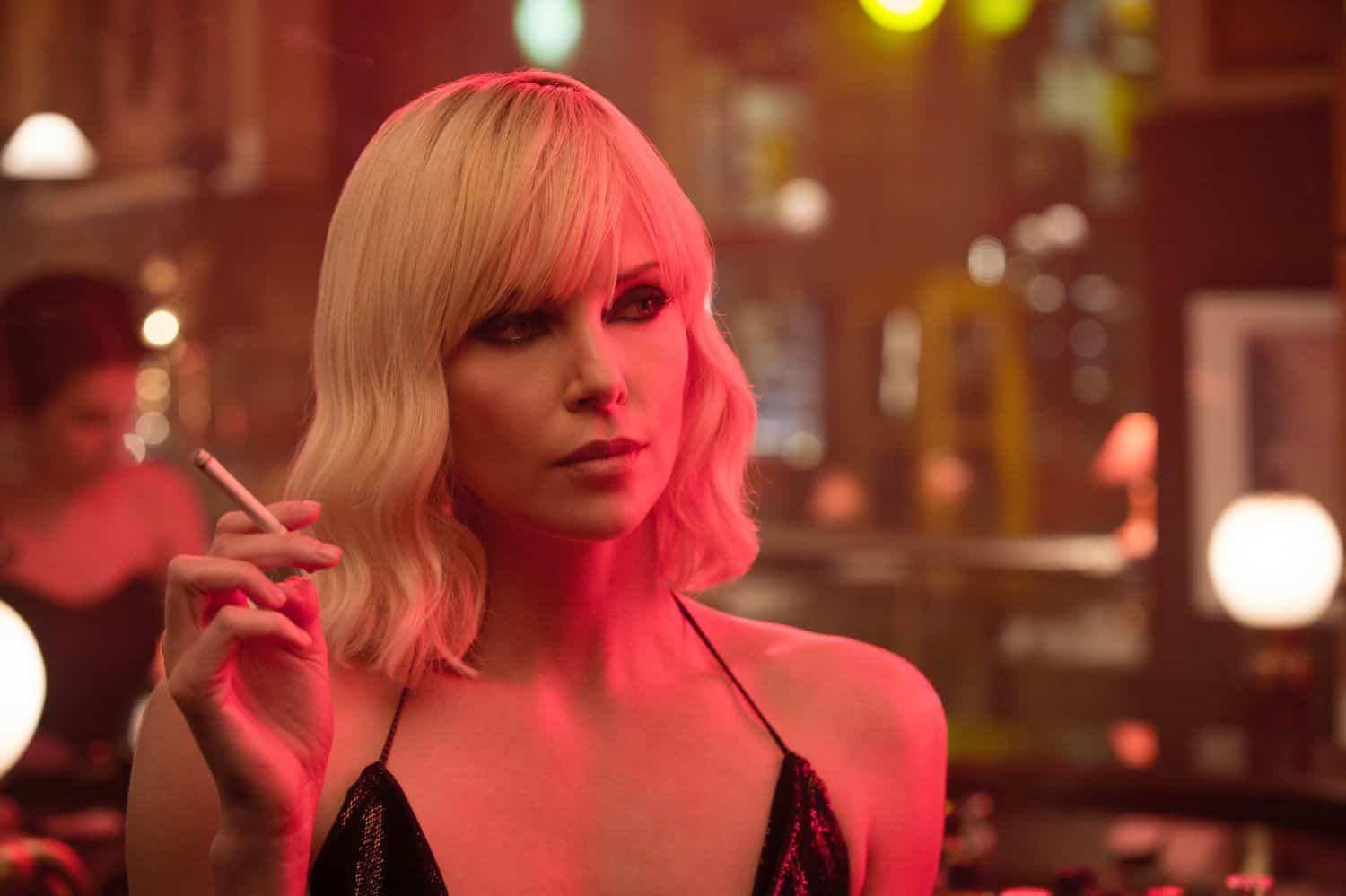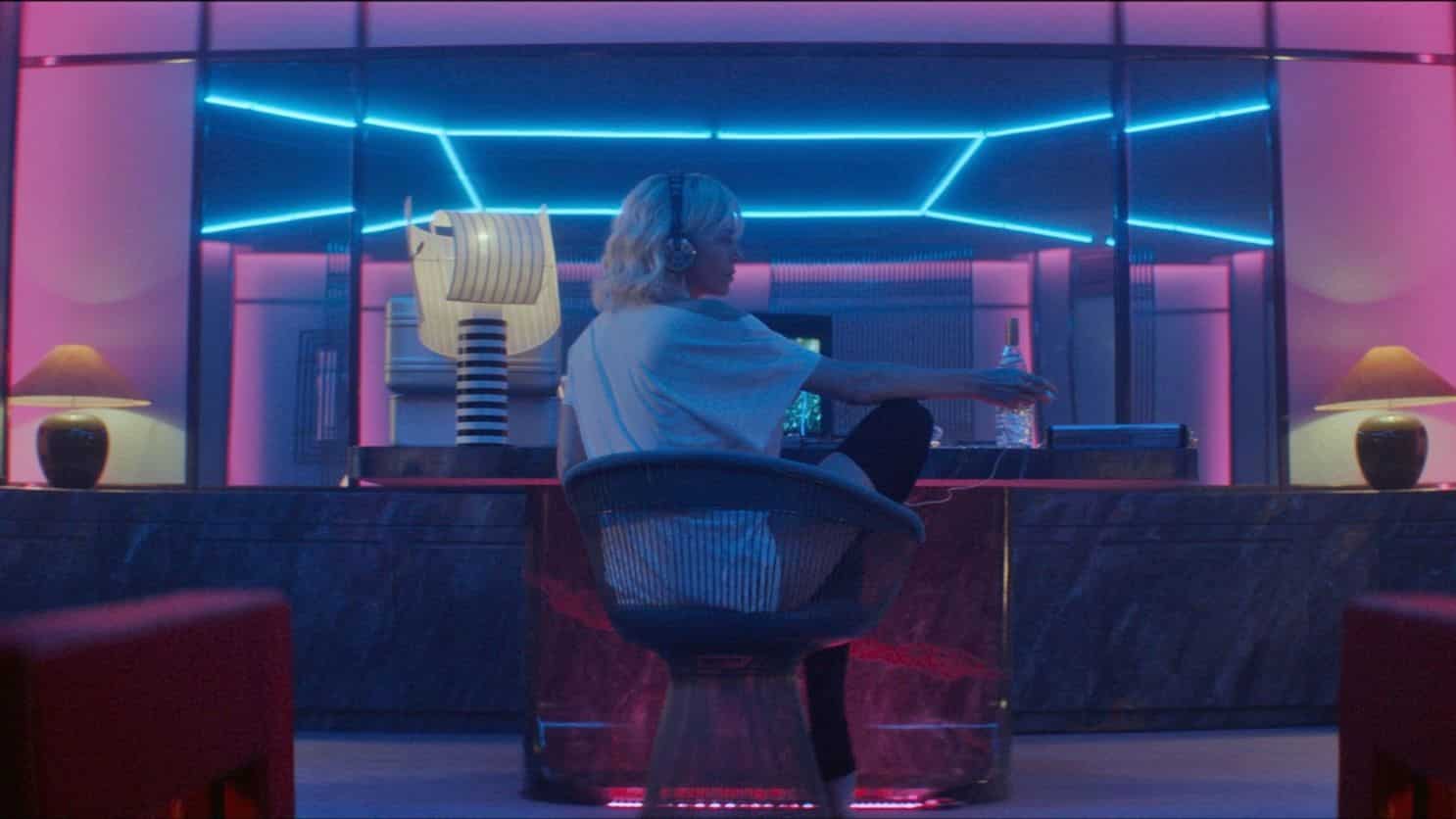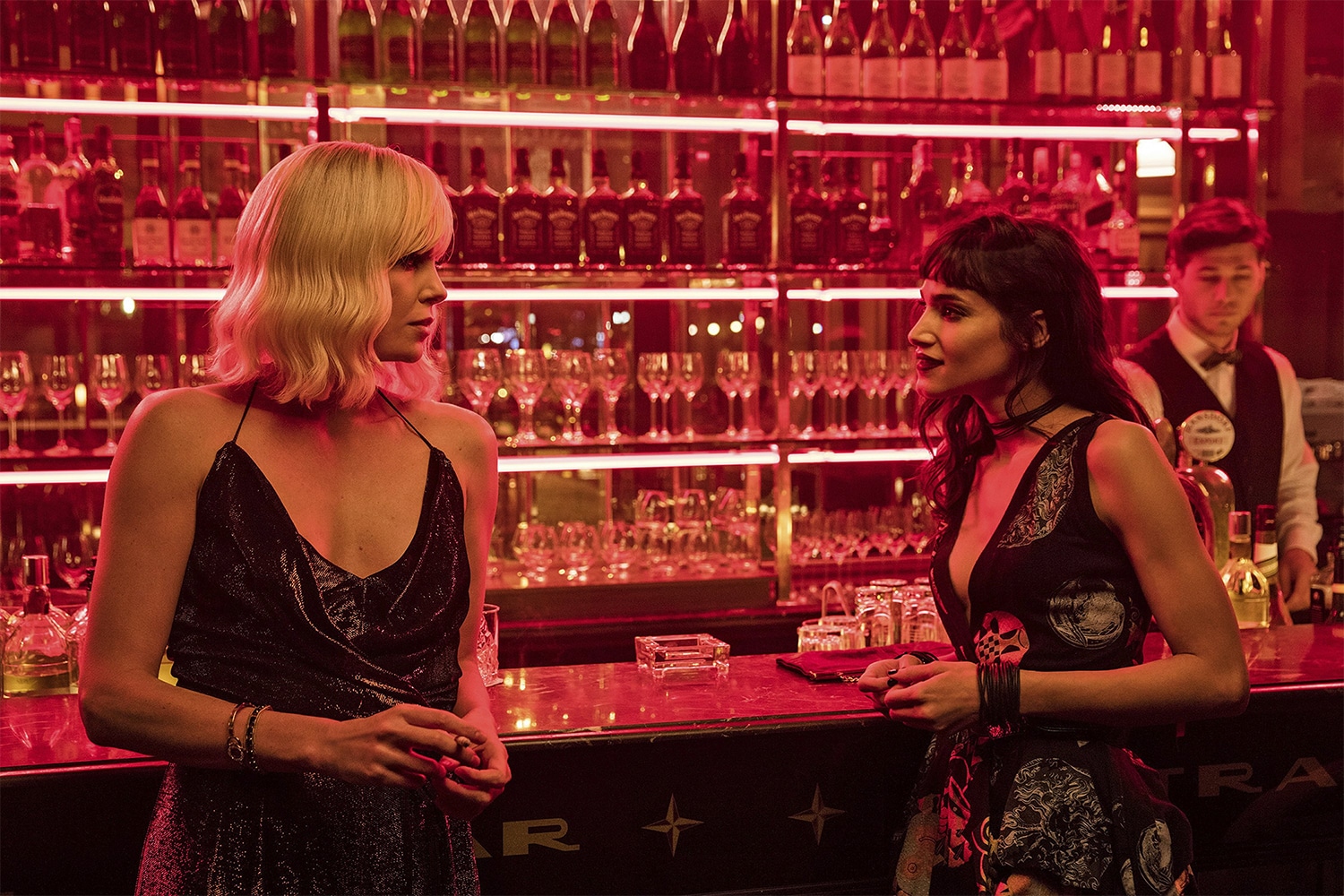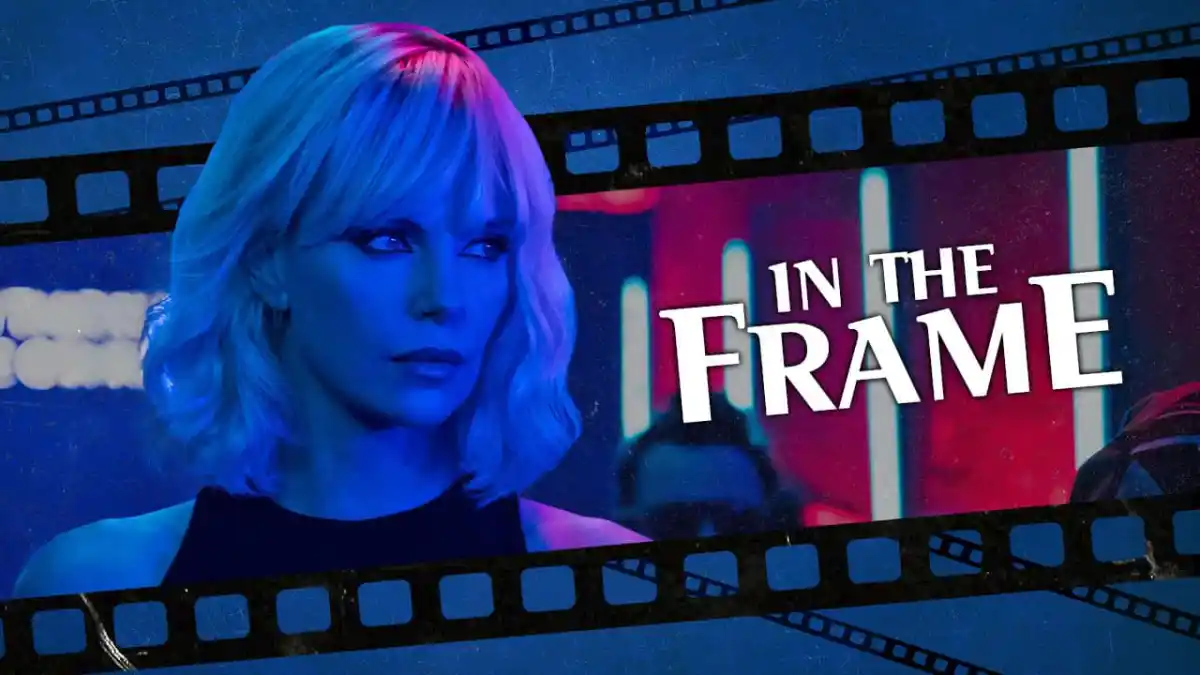Atomic Blonde is a film about living through the end of the world.
Adapted from Antony Johnston and Sam Hart’s graphic novel The Coldest City, David Leitch’s espionage thriller is set primarily in Berlin against the backdrop of the fall of the Berlin Wall. The individual elements of the plot are standard spy thriller stuff: There are two sides fighting over a MacGuffin that could radically alter the balance of power, several untrustworthy double agents, innocents who get caught in the crossfire.
Indeed, Atomic Blonde seems to deliberately invite comparisons to John le Carré’s Cold War thrillers. Toby Jones is cast as a shady and careerist MI6 handler, evoking his role in Tinker, Tailor, Soldier, Spy six years earlier. The film refers to the real-life “C” as the head of British intelligence operations to add a hint of authenticity, just like le Carré’s novels. Even the title of the source comic feels like an allusion to le Carré’s own Berlin-set masterpiece, The Spy Who Came In from the Cold.
However, what distinguishes Atomic Blonde from the work of le Carré is the way in which the film filters le Carré’s cynicism and wariness through a fin de siècle nihilism. Le Carré’s plots tend to be tight and well-structured; his characters suffer at the whims of forces outside their control, but those forces at least move according to a discernible internal logic. In contrast, the plot of Atomic Blonde is a deliberate mess. Its character motivations are fuzzy, its internal logic hazy at best.

The plot of the movie focuses on MI6 agent Lorraine Broughton (Charlize Theron), who is dispatched to Berlin to solve the murder of James Gascoigne (Sam Hargrave) and identify the identity of the double-agent “Satchel,” who has been passing British secrets to the Russians. Her point of contact is local agent David Percival (James McAvoy), who has – in the absence of a British embassy to control him – “gone somewhat native.”
The plot of Atomic Blonde makes more sense in terms of spy movie clichés than it does in terms of narrative coherence. Unlike Tinker, Tailor, Soldier, Spy, the film is not a mystery. The character arcs seem determined by characters’ position in the plot and the expectations of the genre, rather than developing organically. Percival inevitably serves as Lorraine’s primary antagonist. Lorraine is inevitably revealed to be “Satchel,” working for the Americans while playing the British and Russians.
Atomic Blonde is aware of this. Late in the film, Lorraine is watching MTV News as host Kurt Loder broaches the big question of November 1989, “Sampling: is it art, or is it just plagiarism?” The ending of the movie pushes this idea to the fore, with Lorraine manipulating and splicing recordings to falsify audio evidence that Percival was “Satchel” all along. Words and ideas are taken out of context, jumbled up, and restructured to present a disjointed but familiar narrative.
This is because Atomic Blonde is more about mood than it is about actual plot. Indeed, the movie repeatedly underscores that the plot of the movie is entirely pointless. Lorraine is told that she has been dispatched to Berlin to recover “an atomic bomb of information” that “could extend the Cold War another 40 years,” but the audience knows this is nonsense. The film opens with a title card contextualizing events, reminding audiences that the Berlin Wall fell in November 1989.

As a result, everything in Atomic Blonde is completely pointless. Nothing that happens in the film will prolong the Cold War. All the plotting and scheming means absolutely nothing. Lorraine accuses her superiors of wanting nothing more than to clean up their own messes before the Iron Curtain comes crashing down. Atomic Blonde repeatedly juxtaposes Lorraine’s adventures with the civil protests taking place across the Eastern bloc, the events that will actually bring the Cold War to an end.
The end of the Cold War represented a seismic shift in the political order. Perhaps prematurely, Francis Fukuyama heralded “the end of history.” Phillip E. Wegner classified the “long nineties” – the gap between the fall of the Berlin Wall and the attacks of Sept. 11 – as “life between two deaths.” President George H.W. Bush would declare that there was a “new world order” following the collapse of the Soviet Union and the end of the Cold War as an ordering principle.
Atomic Blonde embraces the idea of the collapse of the Berlin Wall as an apocalyptic event. West Berlin is portrayed as a truly hedonist space. Cars burning in the night, gunfire flares in the background, fireworks burst in the sky. Percival sees it as a playground, where he has set himself up as something approaching an outlaw king. Even Lorraine becomes embroiled in a doomed affair with French agent Delphine Lasalle (Sofia Boutella).
MI6 classifies Cold War Berlin as “the Wild West.” It’s not an unfair description. Berlin was perhaps the last frontier. The Berlin Wall was one of the last obstructions to globalization, delineating East from West. The Iron Curtain marked the end of “the West” as firmly as the unyielding Pacific marked the boundaries of the American frontier. The dismantling of the Soviet Union brings all that crashing down. Without borders there can be no liminal spaces. The Berlin Wall was load bearing.

Atomic Blonde reinforces this sense of apocalypse by heightening its style. It juxtaposes horrific violence with catchy pop music (“99 Luftballons”) or gentle ballads (“Father Figure”). While the film’s plot is convoluted nonsense, director of photography Jonathan Sela bathes the film in neon colors to convey mood – cool blues, rich reds, alien greens. The film’s choreography emphasizes the brutality of combat. Lorraine’s mission might be meaningless, but the pain she feels is real.
Atomic Blonde was released in July 2017. That summer, a lot of walls came crashing down. Two weeks earlier, War of the Planet of the Apes focused on the efforts of the deranged Colonel McCullough (Woody Harrelson) to build a wall to keep out more insanity. Less than a month later, the seventh season finale of Game of Thrones would demolish its own wall, allowing the Night King’s madness to spill forth onto Westeros. Walls and madness seemed linked in the popular imagination.
Of course, none of this was planned or intentional. These examples predate Donald Trump’s campaign promise to build a border wall. Game of Thrones had been building to the collapse of that wall since G.R.R. Martin wrote the first book in 1991. Director Matt Reeves insisted that any contemporary parallels in War for the Planet of the Apes were “totally unintentional.” Atomic Blonde was based on a graphic novel from 2012 about events in 1989. Still, that resonance is inescapable.

This gets at the interesting aspect of the apocalypse at the heart of Atomic Blonde. The audience knows that the world will live through the collapse of the Berlin Wall. As much as Atomic Blonde captures the apocalyptic mood of Berlin on the eve of reunification – “everything you want is on the other side of fear,” promises a neon sign in a dingy basement bar – both film and audience understand that the world did not actually end when the wall came crashing down. It simply felt like it did.
This is what is most striking about revisiting Atomic Blonde three years after its release. It is apocalyptic, but it captures the sense of the end of the world as something perpetual and eternal. The world can feel like it is ending, even if it never actually does. This has a strange resonance with the times around the film: the cracks in the established political order during the second decade of the 21st century, two once-in-a-lifetime global recessions, a once-in-a-century pandemic.
Cold War thrillers often present the end of the world in stark terms, through the specter of atomic warfare and nuclear annihilation. These fears even found expression in apocalyptic science fiction of the era. Atomic Blonde takes the structure of a Cold War thriller and applies it to a more existential apocalypse. The threat in Atomic Blonde does not derive from a rigidly defined enemy, but instead from the breakdown of the ordering principles that structure the world itself.
Atomic Blonde understands what it feels like to live through the apocalypse and to discover that the world has not actually ended.






Published: Jul 17, 2020 11:00 am